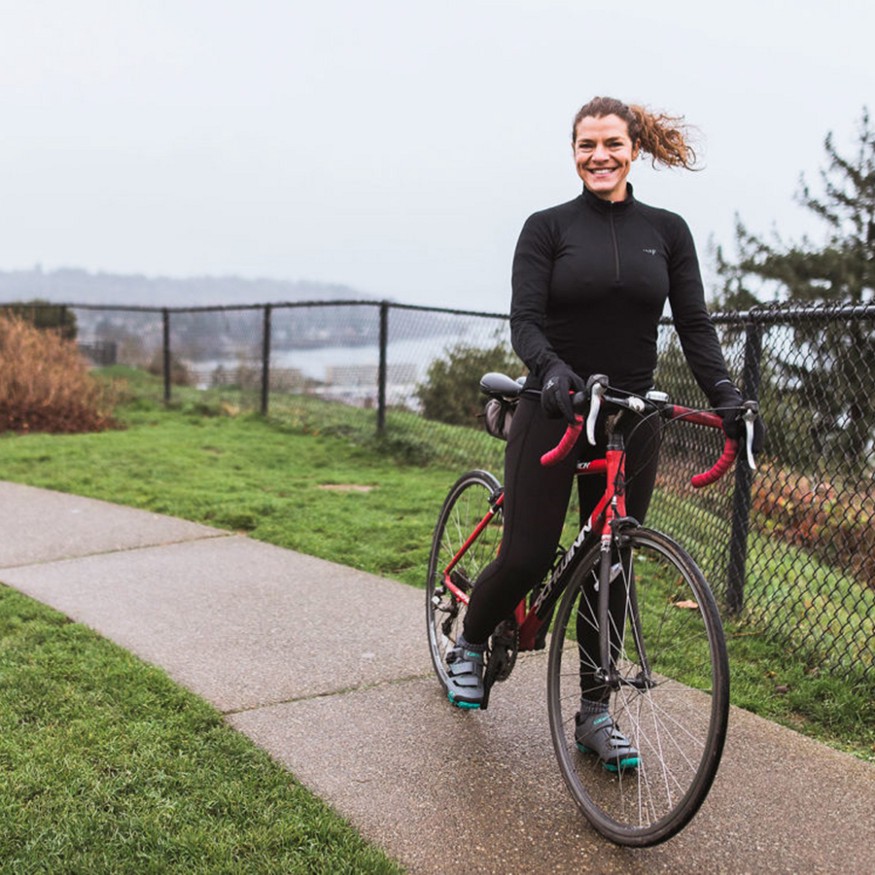It’s no secret that regular physical activity and exercise are incredibly valuable for improving one’s overall health and wellness.
Regular exercise boosts energy levels and mood, reduces stress, improves quality of sleep, as well as helps to control appetite and weight. In the long run, exercise reduces the risk of heart disease, stroke, type 2 diabetes, some cancers, brain dysfunction, depression, and inevitably improves one’s quality of life.
However, exercising with type 1 diabetes can be frustrating, due to fear of experiencing a low blood-sugar reaction. The good news is, it doesn’t have to be. Understanding how to make proper adjustments to insulin will greatly reduce the chances of a low. It will also allow you to avoid having to eat prior and just makes exercise more fun.
Active Living with Type 1 Diabetes
As an active person living with type 1, it took me almost twenty years of experimentation to figure out how to exercise without overloading on carbohydrates in order to avoid a low blood sugar.
As a teenager, I had no idea why my body’s responses to exercise would vary so greatly. I was overwhelmed and frustrated because I wanted to be thinner, but I was taught I must always eat prior to being active to avoid going low. However, I was eating more than I could burn, which of course, equals weight gain. No matter how much I exercised, I felt heavy and angry, which led me into a downward spiral of developing an eating disorder.
Today, that struggle is behind me. I have finally learned that eating excess carbohydrates before exercise is unnecessary. Staying active is one of the best medicines for people with type 1 diabetes (besides insulin, of course) and knowing how to do it without going low is a wonderful skill to learn.
I wish this life-changing information was part of today’s basic diabetes education for everyone. If you have type 1 diabetes, you too may be overwhelmed and misinformed like I had been before coming to the realization of this freedom. No matter what you may have been taught in the past, I hope reading this article is life-changing for you.
How to Exercise Without Going Low
By following these simple management tips, you will dramatically reduce your chances of going low when you are active:
Tip #1: Try to avoid exercise within four hours of giving yourself rapid-acting insulin.
Rapid-acting insulin peaks after about an hour and can stay active in your body for about 4 hours, and the bigger the dose, the longer it can last. If you have taken a large dose (which can be as small as 3 units for some people), waiting to exercise until it’s almost out of your system, i.e. at least three to four hours after dosing, you will greatly reduce your chances of going low.
The key lesson here is that insulin is what makes you go low, not exercise. Exercise simply makes the insulin you have in your body more powerful, so the less you have on board, the less likely you’ll go low. Understanding that point will change your life.
Tip #2: Make sure your background insulin is adjusted correctly to your personalized needs.
Making sure your basal rate or long-acting insulin dose is set correctly is critical for achieving good blood sugar levels. If your dose is too high, exercise will make your blood sugar crash. Getting your long-acting insulin (for those on injections) or basal rate (for those on a pump) set correctly is a process that requires detailed records and self-monitoring over a few days or weeks. Although it’s a complex process to decipher your individual needs, it is critical to learn your personalized dose/basal rate — not only for avoiding lows during exercise, but also to establish the foundation for good blood sugars 24 hours a day. If your background insulin is not set correctly, you will be plagued by frustrating and unpredictable blood sugar levels on a daily basis, with or without exercise.
Tip #3: The less insulin in your body before exercising, the less likely you’ll go low.
This point combines the wisdom of the two tips above. As a person with type 1 diabetes, the beta cells in your pancreas make little to no insulin. With zero beta cell function, the only insulin in your body is what you have injected or delivered via a pump. Because insulin makes you go low, it makes sense that the less insulin you have in your body before exercise, the less likely you are to go low.
To make this point easier to grasp, remember the day you were diagnosed? No matter how active you were, it was impossible for you to go low. It’s never exercise alone that makes you go low. It’s the insulin. Exercise makes insulin more powerful. Without excess insulin on board, you cannot go low.
This point seems so obvious to me now, but as a child, it was ingrained in my mind that I MUST eat before any physical activity. During my teen years, my workouts were always in the afternoon — a few hours after my lunch dose. I calculated that I always must eat 45 grams of carb prior to an hour workout to avoid going low.
But once I started college, my formula no longer worked. I started exercising first thing in the morning and my blood sugars would soar post-workout. This kept happening for weeks, so one day I made the bold move to cut back from my tried-and-true 45 grams of carbs down to 30 grams. At 30 grams, my blood sugar was still high afterwards, but slightly less so. After a few weeks of only eating 30 grams, I then reduced it to 15 grams. Again, my post-exercise blood sugar was still higher than normal but slightly lower than after the 30 greams.
Then one day, I found the courage to not eat anything before my workout…and my numbers stayed relatively steady and did not go low! I was angry and excited at the same time as I couldn’t believe no one had ever told me this was possible.
I asked my doctor why this was happening, and I’ll never forget his reply, “You wouldn’t understand. It’s too complicated to explain.” Today, I’m quite clear that was his way of saying, “Wow, I don’t know.”
After weeks of analyzing how I could possibly exercise without having to eat anything prior and yet not go low, the unique variable I finally realized was that I hadn’t taken any rapid insulin for over eight hours prior to my morning workout. All those years during my childhood, I would always exercise just a few hours after my lunch dose.
I am beyond grateful that I now know how to exercise without having to eat anything prior and I cannot remember the last time I had a bad low while being active. Learning this has been life-changing for me and my patients.
If you must dose rapid-insulin prior, timing your exercise as far after its peak of power (after about 1–2 hours) will lower your chance of a low blood sugar. Furthermore, the smaller your dose, the lower your chance will be as well.
Please note: I am not saying to ever have zero insulin in your body, as that would put you into diabetic ketoacidosis (DKA). You must always have at least some insulin, such as your properly set basal or long-acting, on board.
Tip #4: If you eat before a workout, opt for something low carb.
Low-carb snacks will provide fuel without having to dose much or at all for them. Here are some examples:
- Celery and peanut/almond butter
- Nuts/seeds
- Avocado w/ salt
- Avocado & seed crackers
- Guacamole with jicama
- Hummus & veggies
- Red/green/yellow peppers
- Cucumbers
- Carrots & celery
- Turkey/chicken/fish
- Eggs
You can happily eat any of these snacks before or during your workout likely without having to dose for them, thus enjoying stable blood sugars during activity.
Regardless, it is still important to always carry some form of glucose with you during any sort of activity. Glucose tabs work the fastest. Look at your CGM or test your blood sugar often to be aware of what your glucose level is at the start and during your activity and always be prepared to treat a low.
Tip #5: Adopt a low-carb daily diet.
Today, the standard recommendations given to people with type 1 diabetes is that we can eat an unlimited amount of carbs as long as we count and dose appropriately for them. I have not found this to be true. If your goal is to have near-normal blood sugars, that approach simply does NOT work.
Some carbs digest quickly. Some carbs digest slowly. Adding in protein makes a difference in how your blood sugar responds, as well as the amount of fat. Furthermore, different foods digest at different rates, yet insulin only works at one slow rate. Trying to calculate the digestion rate of food and its associated rise in blood sugar to hit at the exact same time your insulin is peaking is an almost impossible task. Inevitably, when digestion works fast, you will likely go high first and not come down until your insulin finally kicks in. Alternatively, if your insulin hits first you will go low and then high later once your food has had a chance to digest.
Insulin is not a fast or precise tool for blood sugar regulation, but it’s the best we’ve got today. I always laugh at the term ‘rapid-acting’ insulin, because when you’re trying to get a high down, it can take an hour or more.
A low-carb diet makes achieving good blood sugar levels much easier. Low-carb diet options allow you to take smaller doses of insulin. Smaller doses greatly reduce your risk of going low, especially preventing one of those really “bad lows,” which are usually only caused by a large dose of insulin.
To make avoiding lows during exercise your new reality, make sure to have your long-acting dose set correctly, choose low-carb meals and snacks the majority of the time (thus allowing you to take smaller doses). You must also gain the proper knowledge and skills to dose your personalized fast-acting insulin properly.
Want support on how to get an A1c below 6.5%? Dr. Jody offers private calls, online courses, and a monthly education program called The T1D CREW. Learn more here: www.DrJodyND.com.





